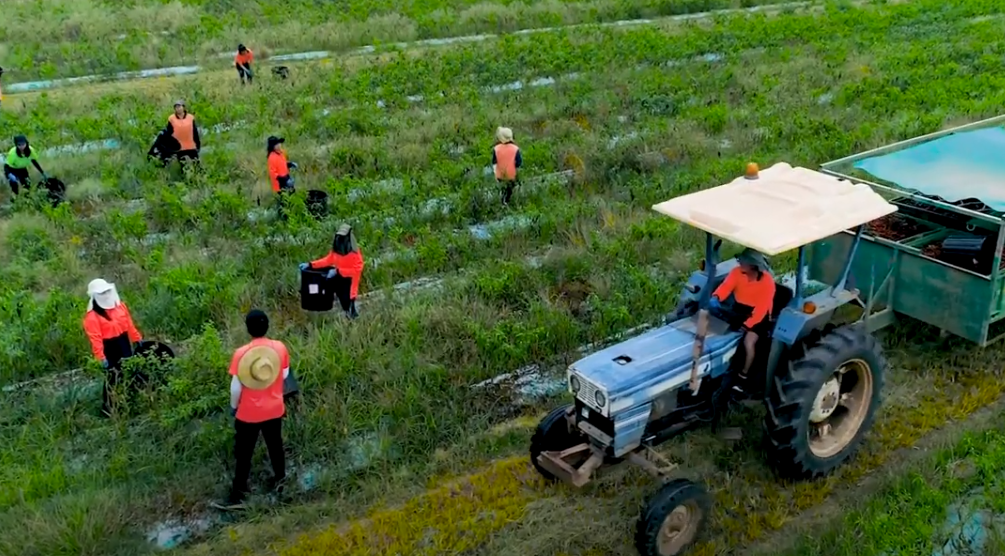
Economist Ben Artup looks at labour force data for the Wide Bay Burnett region showing a “massive” 3 per cent increase in the participation rate.
Last Wednesday the Australian Bureau of Statistics (ABS) released its monthly Labour Force survey for the Wide Bay Burnett region.
The survey data is available on the ABS’s website by clicking here and downloading Table 16 C (see data sheet 6).
The survey shows a jump of 5.7 per cent in the region’s unemployment rate, from 8.8 per cent in February to 14.5 per cent in March. At the same time the national unemployment rate, released a week earlier, increased by only a small margin of 0.1 to 5.2 per cent.
So, what happened in our region during March 2020?
By only reading the above figure you could be forgiven (perhaps) for jumping to the conclusion our region just experienced massive job losses as a result of COVID-19, and that this happened at a rate not seen anywhere in Australia seen since the Great Depression.
However, if you dig deeper into the data provided by the ABS, you’d see that neither of these conclusions can be made.
Explaining this statement requires an understanding of how the ABS defines and calculates unemployment and some high school level knowledge of economics.
Put simply, the ABS calculate the unemployment rate as the number of people actively seeking employment expressed as a percent of the labour force, where the labour force is the total number of employed and unemployed. The ABS calculate the rate primarily through a monthly telephone survey.
Economists also look at the size of the labour force expressed as a percentage of the working aged population. This is called the participation rate and is generally regarded as the best measure of labour market confidence and performance.
The only way the participation rate can improve, assuming a constant working aged population, is that people who were not previously in the labour force join the labour force by starting to look for work — either successfully finding employment or not.
It is important to know that if someone is not actively seeking employment during the survey period the ABS do not count them as unemployed, regardless of whether they’re receiving social security benefits or not.

Ok, that’s enough basic economics. Now let’s put this into action.
In March, 19,100 people across the Wide Bay Burnett region were recorded as actively seeking employment, otherwise defined as unemployed. This was an increase of 8200 — or 75 per cent from February.
To put this figure into perspective, this was the single largest increase in labour force size the region has seen in more than 20 years.
The good news about this figure is it wasn’t driven by people who lost their jobs, rather it was driven by new job seekers who entered the region’s labour force in March.
And, if we believe the ABS survey data, this is good news.
While it sounds counter-intuitive, the reason for this positive assessment is that economists take the view that people generally only enter the labour force (by starting to look for employment) if they believe, or have the confidence, they will find employment.
The standout statistic in the ABS’s March survey for our region wasn’t the unemployment rate, rather the change in our labour force participation rate which jumped by a massive 3 per cent, from 50.2 to 53.2 per cent.
It is possible however that some of the 8200 new job seekers were people who just lost their jobs. This possibility can be largely discounted during March because, according to the data the number of employed residents in the region remained almost unchanged, moving less than 1 per cent (from 113,800 to 113,100).
The conclusion from this analysis is that the region’s dramatic increase in its monthly unemployment rate can almost entirely be attributed to an improvement in confidence job seekers held in March which saw record numbers of them enter the labour force by actively seeking employment.
To put it another way, the sharp increase in the unemployment rate wasn’t caused by a catastrophic month of large-scale job losses right across our region, possibly pre-empted by the emerging COVID-19 situation.
However, the most standout statistic in the ABS’s March survey for our region wasn’t the unemployment rate, rather the change in our labour force participation rate which jumped by a massive 3 per cent, from 50.2 to 53.2 per cent.
This jump is the single largest monthly improvement in the region’s labour force in more than 17 years (or since August 2002).
Some may try to explain this improvement by suggesting people rushed out and started actively seeking employment when the government started shutting down parts of the economy due to COVID-19 to ensure they’d be eligible for unemployment benefits.
Two points close this suggestion down.
Firstly, the ABS survey was conducted in the first half of March, well before the government’s COVID-19 restrictions and income support measures came into place.
Secondly, the ABS do not use Centrelink registrations when calculating unemployment, which is where many assume data on unemployment must come from.
Alternatively, there is also a chance the ABS’s March Labour Force Survey for the region has errors, particularly regarding the 8200 new active jobs seekers that appeared in the region during the month.
Students of statistics will be familiar with the saying “There’s Lies, Lies, Damn Lies, Then There’s Statistics”.
There is a chance the ABS got it wrong in March. It happens. Another explanation is that for some reason, survey respondents across the region told the ABS on masse they were actively seeking employment in March, when maybe they weren’t.
Either way, Bundaberg Regional Council will look with interest at the ABS’s Labour Force survey next month where most are expecting to see a fall in employment across the region due to COVID-19 restrictions. We won’t see this data until the end of May.
As for me, I am betting the ABS’s unemployment rate for the Wide Bay Burnett region will fall in April, and that we will be talking about the March data for years to come.




